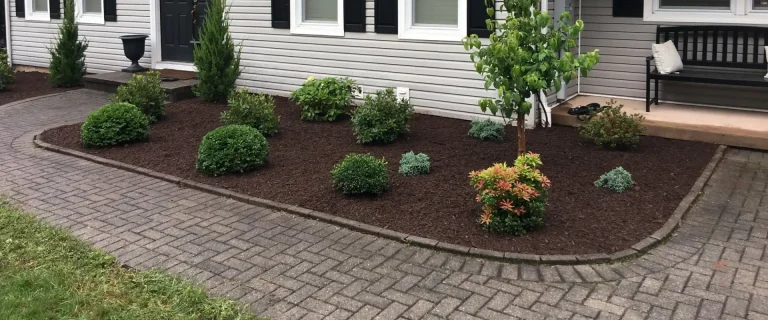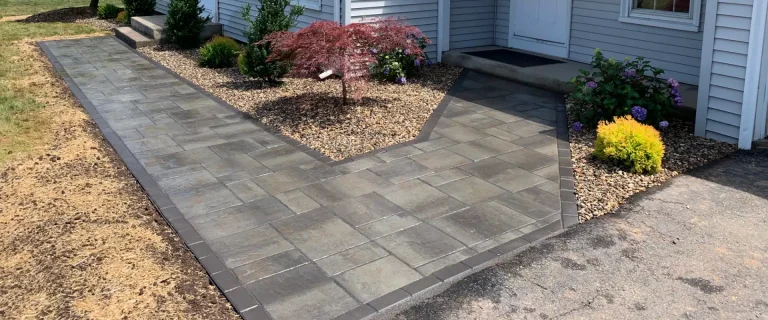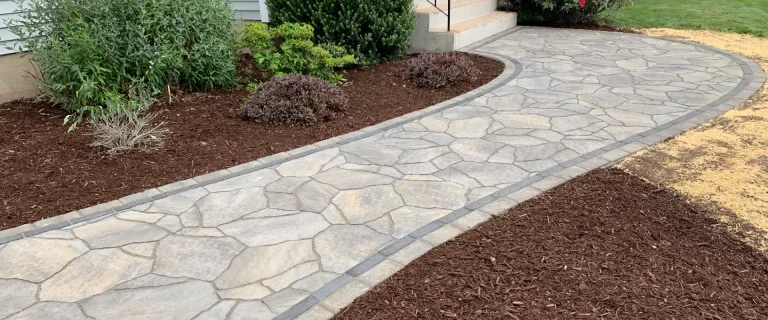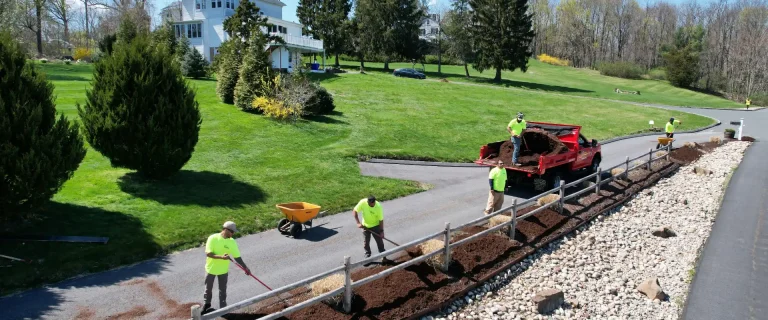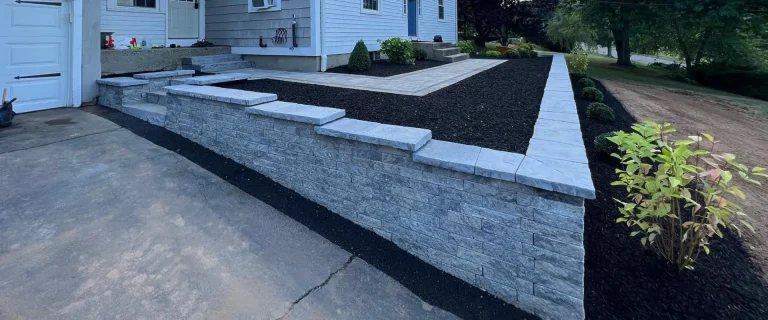Landscaping To Keep Water Away From House
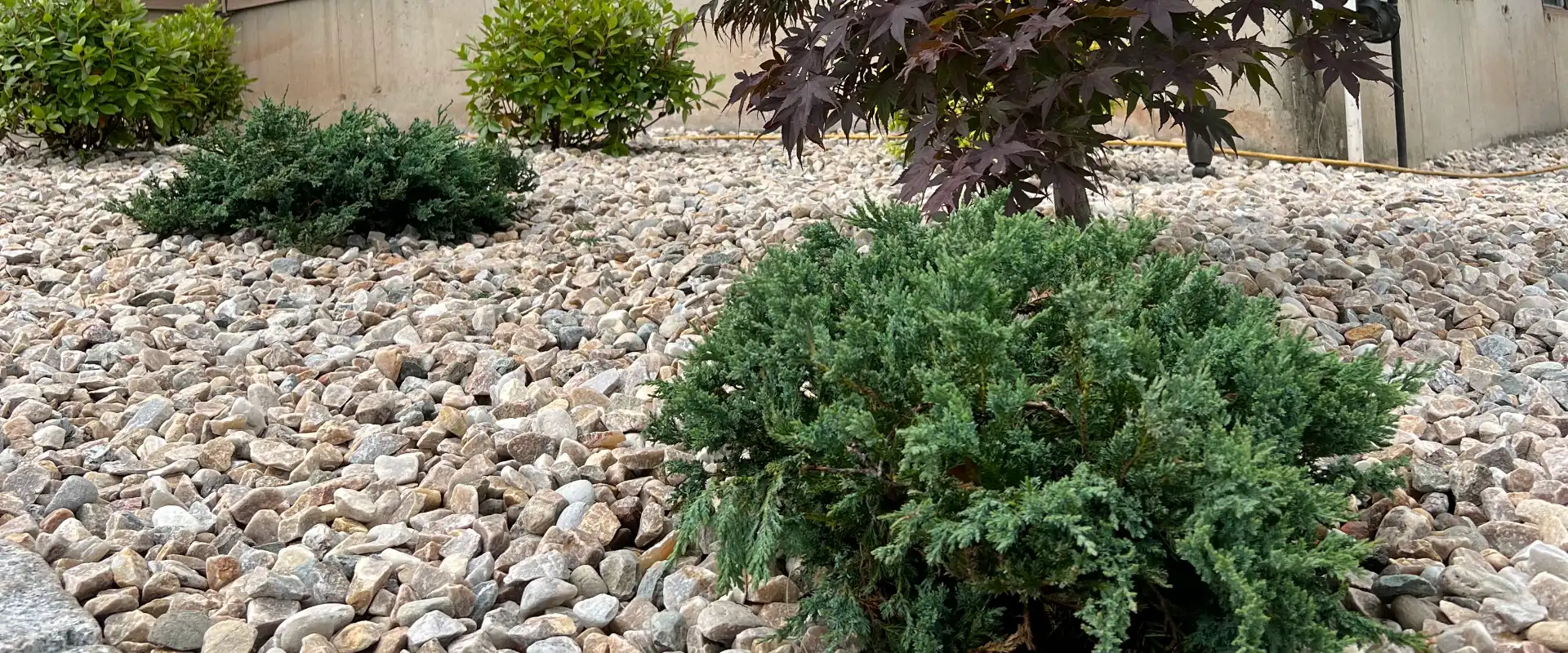
Times are changing, and we’re seeing more rain and less snow in Connecticut. Whether you see that as good or bad, there’s one fact that you shouldn’t ignore: It can lead to flooding issues on your property.
Does this have you worried about water damage to your house’s foundation or basement? These are valid concerns, especially if your landscaping isn’t designed specifically to keep water away from your home.
The most effective way to deal with this is by using strategic landscaping to keep water away from house foundations and other areas of your yard.
The good news is that these landscaping techniques can redirect excess water and prevent costly damage.
But, how do you go about doing this?
We’ll go over some techniques in your landscaping to keep water away from house foundations and other areas of your property where it may pool.
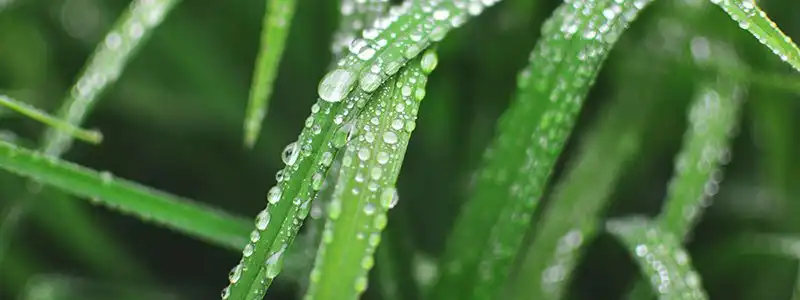
Importance Of Diverting Water Away From Foundation
The optimist in you may think that you can just turn a blind eye to the problem and it will go away. Unfortunately, ignoring flooding and water damage can lead to significant problems for your home and property.
If you don’t take the preventative action of diverting water away from foundation and your yard, you can face many problems. These include:
- Damage to your home
- Mold and mildew
- Unwanted insects
- Erosion
Let’s dive a little deeper into each of these problems that come from neglecting your landscape drainage needs.
Damage To The Foundation Of Your Home
If you don’t divert the water away from your house, it can seep into your home’s foundation. This is obviously bad, and it can cause cracks, shifting, and settling.
To put things into perspective, this can compromise the structural integrity of your home and result in expensive repairs. That’s why these landscape ideas to keep water away from foundation and other structural areas of your house are such a great idea!
Flooding In Your Basement
Even putting aside the damage caused to the foundation, there are other problems with having a bunch of excess water seeping into your house. Have you ever had a flood in your basement? It’s not fun.
Basement flooding can lead to damage to the walls and floor, plus it will ruin a lot of your belongings! Even worse, you might end up with mold growing in your basement, and that becomes a health hazard for your family.
Insect Infestations
Another big issue with standing water is that it can attract mosquitoes, flies, and other insects. Not only are these insects a nuisance, but they can also pose a threat to your family’s health by carrying diseases.
Erosion
You probably invested in your property because of the land on which it’s built, and you’ve likely spent a lot of time and money on the landscaping. You definitely don’t want that to wash away!
Flowing water can wash away topsoil and vegetation, creating ugly and dangerous conditions in your yard. These even spiral into issues like:
- Soil erosion
- Uneven terrain
- Sinkholes
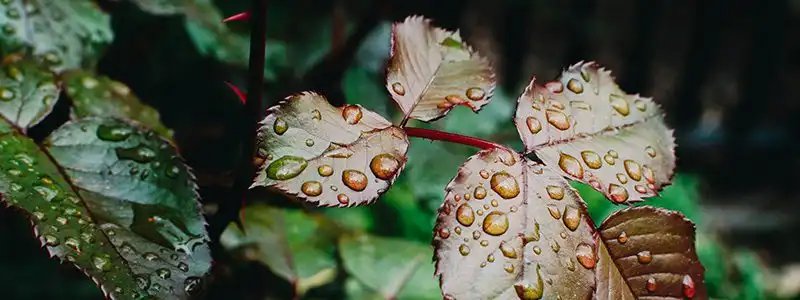
How to Landscape to Keep Water Away from Foundation
Now that you realize the stakes of ignoring the issue, let’s discuss how to landscape to keep water away from foundation points and your landscaping. Different techniques work better in different situations, but here are many of the common strategies.
Keep in mind that many of the best methods will also make your yard more attractive – if they are done correctly and tastefully.
Create A Swale
This first strategy is a swale, which is a shallow, sloping ditch that is designed to direct water away from your house. These can be built in an attractive and artistic way by filling them with stones or plants to help absorb water.
Build A Berm
Another good method is a berm. A berm is an area of raised soil that redirects water. These are often successful when built up along the perimeter to create a barrier against water runoff.
Use A French Drain
Despite the fancy name, French drains are essentially trenches that are filled with gravel and a perforated pipe. The aim here is that they will collect the water, and then redirect it away from your house.
Add Some Plants
This is one of the most elegant solutions, yet it is often overlooked. Trees, shrubs, and plants can naturally do a good job of soaking up and redirecting water. An added benefit is that their root systems help stabilize the soil, and this leads to less erosion.
Permeable Paving Materials
While many people want water-tight patios and walkways, these can have unintended consequences with draining water if they weren’t well planned out.
- Install permeable paving materials: Permeable paving materials like gravel or permeable concrete allow water to soak into the ground rather than running off into your foundation.
- Direct downspouts away from the house: Make sure your downspouts are directing water away from your home and toward an area where it can safely drain away.
- Create a rain garden: A rain garden is a shallow depression filled with plants that can help absorb rainwater and prevent runoff. It’s typically located in an area where water tends to accumulate.
- Install a retaining wall: A retaining wall can help to hold back soil and prevent erosion. It can also be used to create a barrier against water runoff.
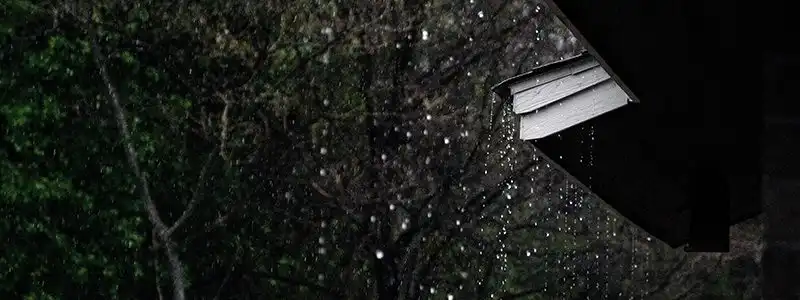
Plenty of Landscaping Ideas To Keep Water Away From House
These are plenty of the best methods when it comes to landscaping to keep water away from house foundations and other areas on your property. But, the most important part is the implementation of these ideas.
In most cases, it’s worth working with a professional landscaping company to take care of this for you. Too many homeowners try to implement DIY solutions, and these often don’t even solve the problem. That matters because you don’t want to reduce the flooding in your basement – you want to eliminate it.
An experienced company like ours has seen it all, so we’ll make sure to do it right the first time. Whether you are already seeing visible problems or you’re just concerned that something might be happening underground, we can help you diagnose and fix things right now. The longer you wait, the more expensive the problem is likely to get.

